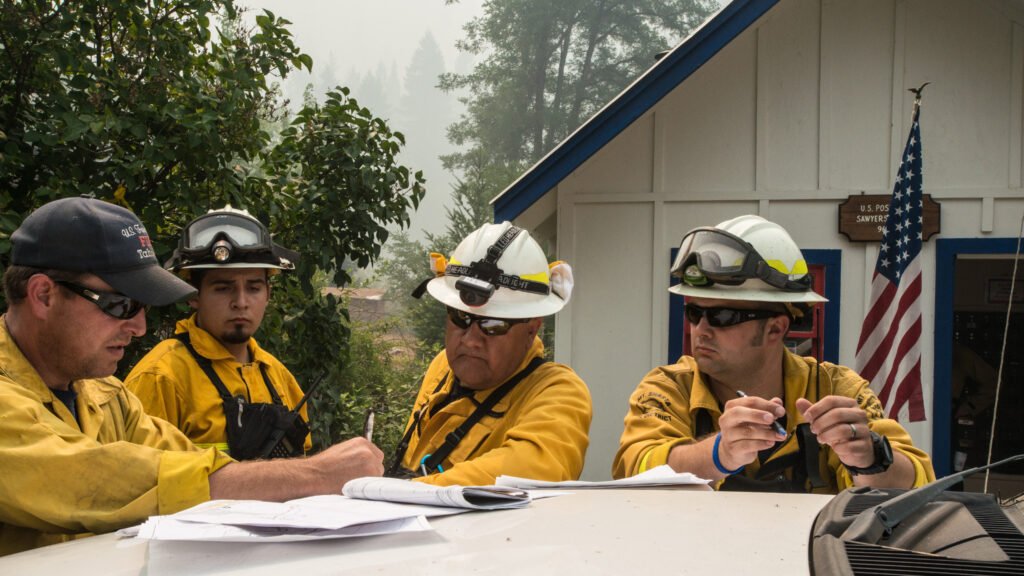Fire prevention effort exceeds parameters, residents allege
This article was originally published at nevadacurrent.com

Written by Dana Gentry.
Edited for tone, length, and neutrality by Amelia Hollis.
Lake Tahoe resident Dr. Staci Baker is reconsidering her decision to enter into a settlement with NV Energy, which cleared trees and vegetation from her property in 2022 without her prior notification or consent. In May, NV Energy agreed to pay Baker $30,000 for damages related to removing trees and brush that the utility classified as fire hazards near electricity lines and utility infrastructure. The settlement effectively ended the Public Utilities Commission of Nevada’s (PUC) investigation into Baker’s complaint.
Baker expressed surprise at this outcome, stating, “It was a complete blindside. I did not understand at all that by agreeing to settle I would not be able to have the PUC address additional concerns.” Under Nevada Administrative Code, the PUC must dismiss complaints once they are settled.

Baker plans to file another complaint focusing on U.S. Forest Service land next to her property, concerned about the scale and methods of the vegetation removal. (Photo courtesy of Dr. Staci Baker)
The tree removal was part of NV Energy’s Resilience Corridor Project, a $21 million initiative intended to “create resilient forests adjacent to approximately 28 miles of NV Energy utility infrastructure on the Nevada side of the Tahoe Basin.”
Similarly, another resident, David Simon, reported he was unaware of plans to thin trees near his home until after the work was completed. Simon stated he would have taken action had he known the scope of the tree removal in advance.
Some residents, including Baker, argue the utility and the Forest Service are exceeding the project’s stated purpose, claiming the removal resembles clearcutting and involves large, mature trees. However, according to the U.S. Forest Service Decision Memo, riparian trees, including mature aspens, are only to be removed if they pose a direct hazard to utility infrastructure. The memo states that trees exceeding 30 inches in diameter should only be removed with approval from a Forest Service biologist.
(Above) the NV Energy Resliance Corrodors Project to the left and the NV Energy Natural Disaster Protection, two of the key documents at the center of this dispute.
In response to community concerns, NV Energy stated it has improved communication with residents in areas affected by vegetation removal. Meghin Delaney, a spokesperson for NV Energy, noted the utility hired a dedicated customer communications specialist last year to improve direct outreach and education efforts related to such projects.
Tahoe Area Sierra Club co-chair Tobi Tyler voiced concerns regarding compliance with project guidelines, alleging environmental impacts were greater than described. Tyler claims that guidelines about tree size and buffers were not consistently followed. NV Energy and involved agencies responded by agreeing to enhance communication, adhere to best practices, and coordinate more closely with contractors.
Hayley Williamson, who has served on both the PUC and the Tahoe Regional Planning Agency, declined to comment due to potential conflicts of interest.
The NV Energy project, like similar forest management projects, is exempt from National Environmental Policy Act (NEPA) requirements. Related legislation, the Fix Our Forests Act, seeks similar exemptions to streamline forest management activities, including thinning and prescribed burns. Supporters of such policies argue they mitigate wildfire risks and benefit local economies through job creation and improved forest health. Critics contend that these practices might increase fire risk and negatively impact forest ecosystems.
Brad Seaberg, timber sale contracting officer for Tahoe National Forest, stated that properly managed forest land provides economic and ecological benefits, supporting local jobs and improving forest health through regular thinning.
The Forest Service did not respond to requests for comments or details about timber removed from the Tahoe forest by the time of publication.

Leave a Reply